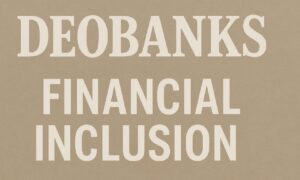Cross-border payments have become more crucial than ever. Businesses, individuals, and even governments rely on swift, secure, and cost-effective systems to transfer money across borders. However, traditional financial systems often fall short in meeting these demands. Ripple, a blockchain-based payment protocol, is revolutionizing the way cross-border payments are executed. With its innovative technology and practical solutions, Ripple is rapidly emerging as a leader in the industry.
Understanding Ripple and Its Technology
Ripple is a blockchain-based payment protocol that facilitates fast, low-cost, and reliable cross-border transactions. Unlike traditional financial systems, Ripple uses its proprietary digital asset, XRP, to bridge different currencies and enable seamless transfers. The core of Ripple’s technology lies in its decentralized ledger, the RippleNet, which allows financial institutions to communicate and settle transactions in real time.
RippleNet comprises three key components:
- xCurrent: A messaging system that enables banks to settle cross-border payments instantly and track them end-to-end.
- xRapid: A liquidity solution that uses XRP to facilitate quick currency exchanges.
- xVia: A user-friendly interface designed for businesses to send payments through RippleNet.
By leveraging these components, Ripple eliminates the inefficiencies of traditional payment systems, such as high fees, long processing times, and lack of transparency.
Challenges in Traditional Cross-Border Payments
To appreciate Ripple’s significance, it’s essential to understand the challenges associated with conventional cross-border payment systems. These include:
- High Transaction Costs: Traditional banking systems charge exorbitant fees for international transfers, making them expensive for businesses and individuals alike.
- Delayed Processing Times: Cross-border payments can take days or even weeks to process due to the involvement of multiple intermediaries.
- Lack of Transparency: Senders often face difficulties tracking their transactions, leading to uncertainty and frustration.
- Limited Accessibility: Many people in developing regions lack access to efficient cross-border payment solutions, hindering financial inclusion.
Ripple’s solutions directly address these issues, offering a more efficient alternative to traditional systems.
How Ripple Transforms Cross-Border Payments
Ripple’s innovative approach to cross-border payments has set it apart from competitors. Here’s how Ripple is transforming the industry:
Speed and Efficiency
Traditional payment systems often rely on outdated infrastructure, causing significant delays in transaction processing. Ripple, on the other hand, completes transactions within seconds. This speed is a game-changer for businesses that require quick and reliable payment solutions to maintain cash flow and operational efficiency.
Cost-Effectiveness
By eliminating the need for multiple intermediaries, Ripple reduces transaction costs significantly. Its use of XRP as a bridge currency minimizes currency conversion fees, making international transfers more affordable.
Enhanced Transparency
Ripple’s blockchain technology provides real-time transaction tracking, ensuring complete transparency for both senders and receivers. This feature builds trust and reduces disputes related to payment discrepancies.
Financial Inclusion
Ripple’s low-cost and efficient solutions make cross-border payments accessible to underserved populations in developing regions. By partnering with local financial institutions, Ripple is driving financial inclusion on a global scale.
Ripple’s Growing Network and Partnerships
Ripple’s success can be attributed to its extensive network and strategic partnerships. The company has collaborated with over 300 financial institutions worldwide, including major banks like Santander, American Express, and Standard Chartered. These partnerships have expanded Ripple’s reach and solidified its position as a leader in the cross-border payment industry.
One of Ripple’s most notable initiatives is its partnership with MoneyGram. Through this collaboration, MoneyGram has integrated Ripple’s technology to enhance its payment services, resulting in faster and more cost-effective transactions. Such alliances demonstrate Ripple’s potential to revolutionize the financial landscape.
Ripple vs. Competitors: What Sets It Apart?
Ripple faces competition from other blockchain-based payment systems like Stellar and SWIFT’s gpi. However, Ripple’s unique features give it a competitive edge:
- Focus on Financial Institutions: Unlike many blockchain projects that target individual users, Ripple prioritizes partnerships with banks and payment providers.
- Use of XRP: Ripple’s integration of XRP as a bridge currency enhances liquidity and reduces transaction costs.
- Scalability: RippleNet’s infrastructure is designed to handle a high volume of transactions, making it suitable for large-scale operations.
- Proven Track Record: Ripple’s growing list of successful partnerships and implementations underscores its reliability and effectiveness.
Regulatory Challenges and Future Outlook
Despite its success, Ripple faces regulatory challenges that could impact its growth. Governments and financial regulators worldwide are still grappling with how to classify and regulate cryptocurrencies like XRP. Ripple’s ongoing legal battle with the U.S. Securities and Exchange Commission (SEC) over whether XRP should be classified as a security has created uncertainty for the company and its stakeholders.
Nevertheless, Ripple’s resilience and commitment to compliance suggest a promising future. The company continues to expand its operations and explore new markets, demonstrating its adaptability and long-term vision.
Broader Impact of Ripple’s Solutions
Ripple’s rise in cross-border payments extends beyond financial institutions. Its technology has the potential to:
- Boost Global Trade: Faster and cheaper cross-border payments facilitate international trade and economic growth.
- Empower Small Businesses: Ripple’s solutions enable small businesses to compete globally by providing access to affordable payment systems.
- Foster Innovation: Ripple’s success inspires other companies to explore blockchain-based solutions, driving innovation in the financial sector.
- Enhance Remittance Services: Millions of migrant workers rely on remittance services to send money home. Ripple’s low-cost and efficient system improves their ability to support their families.
Conclusion
Ripple’s rise in cross-border payment solutions marks a significant milestone in the evolution of global finance. By addressing the inefficiencies of traditional systems, Ripple has positioned itself as a pioneer in the industry. Its innovative technology, strategic partnerships, and commitment to financial inclusion have made it a preferred choice for businesses and financial institutions worldwide.
While challenges remain, Ripple’s potential to reshape the financial landscape is undeniable. As the world becomes more interconnected, Ripple’s role in enabling seamless, secure, and cost-effective cross-border payments will only continue to grow. With its transformative impact, Ripple is not just a solution for today’s problems but a foundation for the future of global finance.



































